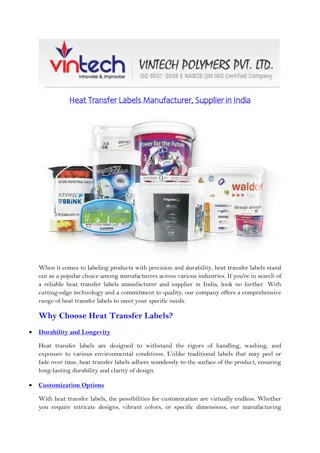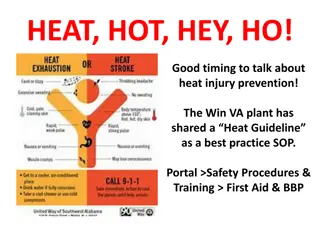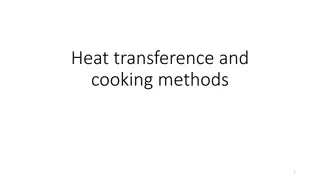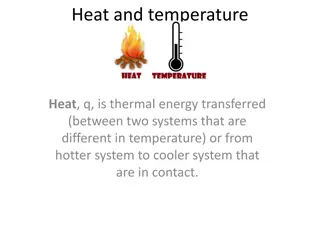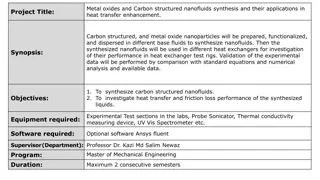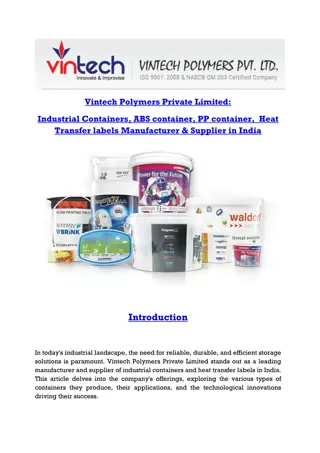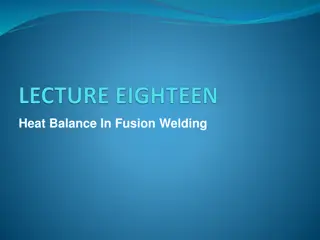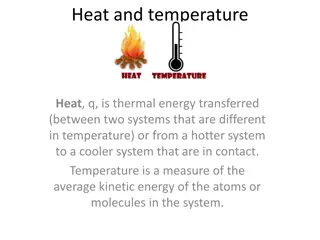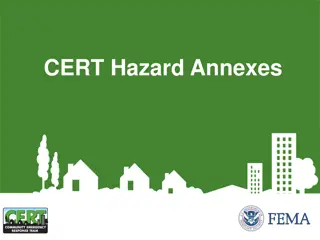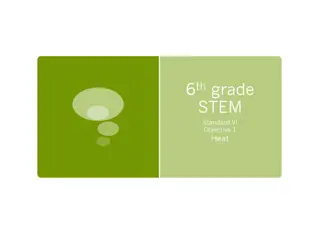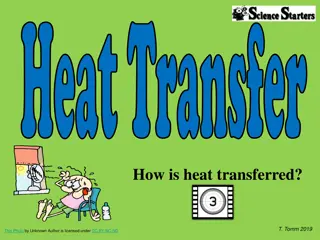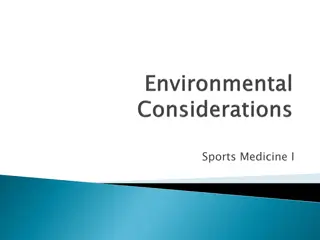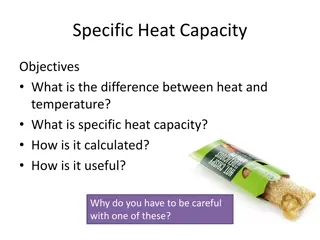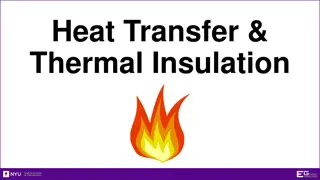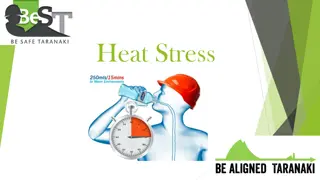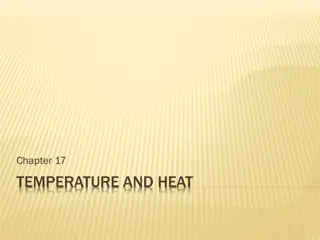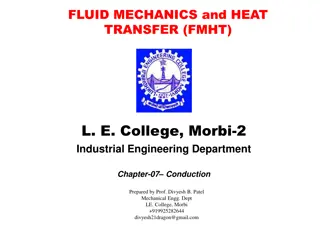Heat Transfer: A Comprehensive Overview
Heat transfer is a fundamental concept in physics, where energy moves from hot to cold objects through conduction, radiation, and convection. Heat is not a substance but a form of energy that speeds up molecules. Conduction transfers heat between substances in direct contact, while convection involves the movement of fluids. Radiation occurs when electromagnetic waves transfer heat to objects. Explore the various methods of heat transfer and their impact on temperature changes.
Download Presentation

Please find below an Image/Link to download the presentation.
The content on the website is provided AS IS for your information and personal use only. It may not be sold, licensed, or shared on other websites without obtaining consent from the author.If you encounter any issues during the download, it is possible that the publisher has removed the file from their server.
You are allowed to download the files provided on this website for personal or commercial use, subject to the condition that they are used lawfully. All files are the property of their respective owners.
The content on the website is provided AS IS for your information and personal use only. It may not be sold, licensed, or shared on other websites without obtaining consent from the author.
E N D
Presentation Transcript
Heat is not a substance (matter) energy. but a form of
Heat is energy. Fast-moving molecules have a lot of heat energy what we call hot. Slow-moving molecules have less heat energy what we call cold. To heat something up is to speed up its molecules.
Heat (energy) can be transferred from object to object. Heat transfer: The movement of heat from hotter objects to colder objects through conduction, radiation, and convection.
Conduction: The transfer of heat between substances in direct contact. If two objects touch, energy is transferred from the hotter object to the cooler object.
Conduction Conduction occurs when a hot object comes in contact with a colder object. The heat energy from the hot object is transferred to the colder object, leaving the warmer object cooler and warming the cooler object.
Convection: Liquids and gases rise as they get heated and fall as they cool. Heat is carried from place to place with the movement of these fluids.
Convection Convection occurs when an object transfers its heat to another object through a medium, such as water (a liquid), or air (a gas).
Radiation: When electromagnetic waves hit an object heat energy is transferred to the object. Waves of radiation travel easily in a vacuum as there are no obstacles.
Radiation Radiation does not rely upon any contact between the heat source and the heated object. For example, we feel heat from the sun even though we are not touching it. Heat can be transmitted though empty space by thermal radiation.




